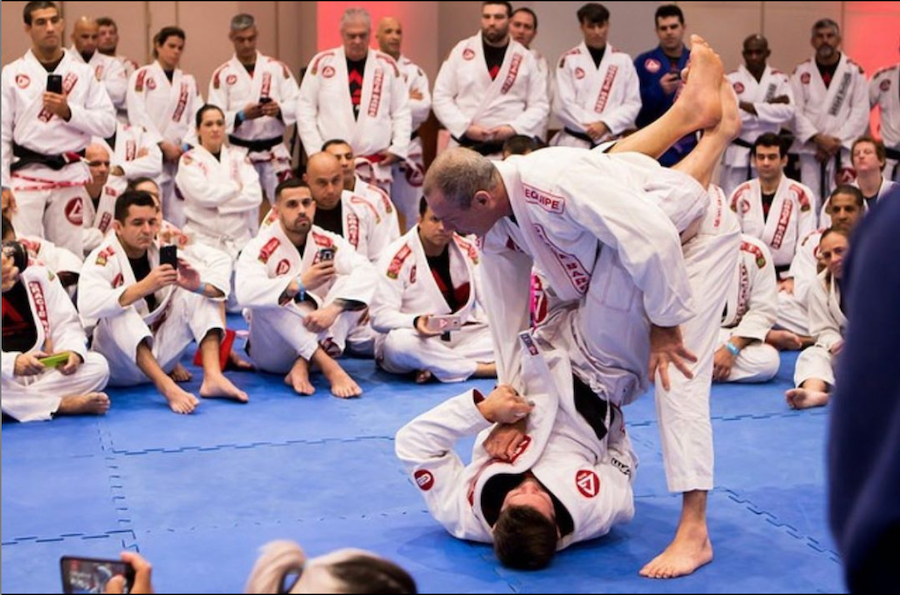GB Student Question: “What should I show my friend who wants to learn about BJJ?”

A Jiu-Jitsu student writes in about wanting to get their friend interested in training, but the friend isn’t ready quite yet to join an academy.
ㅤ
“I have some puzzle mats in my basement and want to teach one of my friends some BJJ (I’m a blue belt) to get them interested. Maybe if they see how awesome jiu-jitsu is, they will want to buy a gi and join my school. What should I show them?“
ㅤ
Many people (perhaps even you reading this now!) got their start training jiu-jitsu by being introduced by a friend who was already training. The best way is to invite them along for a free trial class at your school so they can get the full experience and atmosphere of the Gracie Barra school. That said, it’s also fun to get together informally on your own mats and show them a few moves.
ㅤ
Have you checked out the GB Online Instagram account?
https://instagram.com/graciebarraonline @graciebarraonline
ㅤ
To those jiu-jitsu students who don’t have teaching experience, teaching someone else jiu-jitsu can be a daunting experience. There are literally hundreds of moves, gi, and No-Gi, self-defense…where to get started to best showcase the awesome art of jiu-jitsu?
ㅤ
There are a few things that you should keep in mind when introducing a friend to jiu-jitsu that will encourage – rather than discourage – them to get further into BJJ.
ㅤ
1- Show some more common self-defense/street fight situations that someone who knows nothing about the positions or points in sport BJJ can relate to. Everyone can understand what a basic headlock on the ground is and the importance of knowing how to escape the position. Few beginners will grasp the significance or relevance of your awesome Reverse De la Riva guard and sweep! I actually know a young woman who signed up for a private lesson her first-ever class in BJJ and was taught Reverse De la Riva guard! Needless to say, she had no idea what was going on and didn’t go back. Keep it basic.
ㅤ
2- Do a little positional sparring to illustrate the true effectiveness and ability to control another human being. The truth is, that most of us truly became convinced of the effectiveness of jiu-jitsu after trying some sparring with a more experienced partner and getting completely controlled. Full rolling isn’t as productive as a newbie has no idea of positions or how to apply a submission (or even how to tap when they get caught in a submission!) and they have no idea what they should be doing.
ㅤ
A great, limited live sparring drill is to try to escape/keep the Top Mount position. Your friend will unlikely be able to escape your mount and find themselves completely controlled while your bridging escape will quickly allow you to escape them on top. It’s a great demonstration of jiu-jitsu positional control.
ㅤ
3- Don’t try to show them too much. Ok, I know how excited you are to show your friend your sick omoplata to triangle transition (“or you can even do an inverted triangle like this or this….”) but it is quickly overwhelming to the newbie. There is a saying that is very true: “The best way to teach someone nothing is to try to teach them everything”. After 20 minutes they will be completely overwhelmed and confused. Pick just a few basic things and go slowly. Allow them to experience some success with 2 or 3 things that allow them to say “Hey this is really cool and I can do this.”
ㅤ
If you introduce your friend to jiu-jitsu in the right way, you just might have created a valuable training partner for yourself.
ㅤ
See also on GB Blog: GB Values: Body & Mind with Master Carlos Gracie Jr.
ㅤ
Writer: Mark Mullen, Gracie Barra Black Belt
